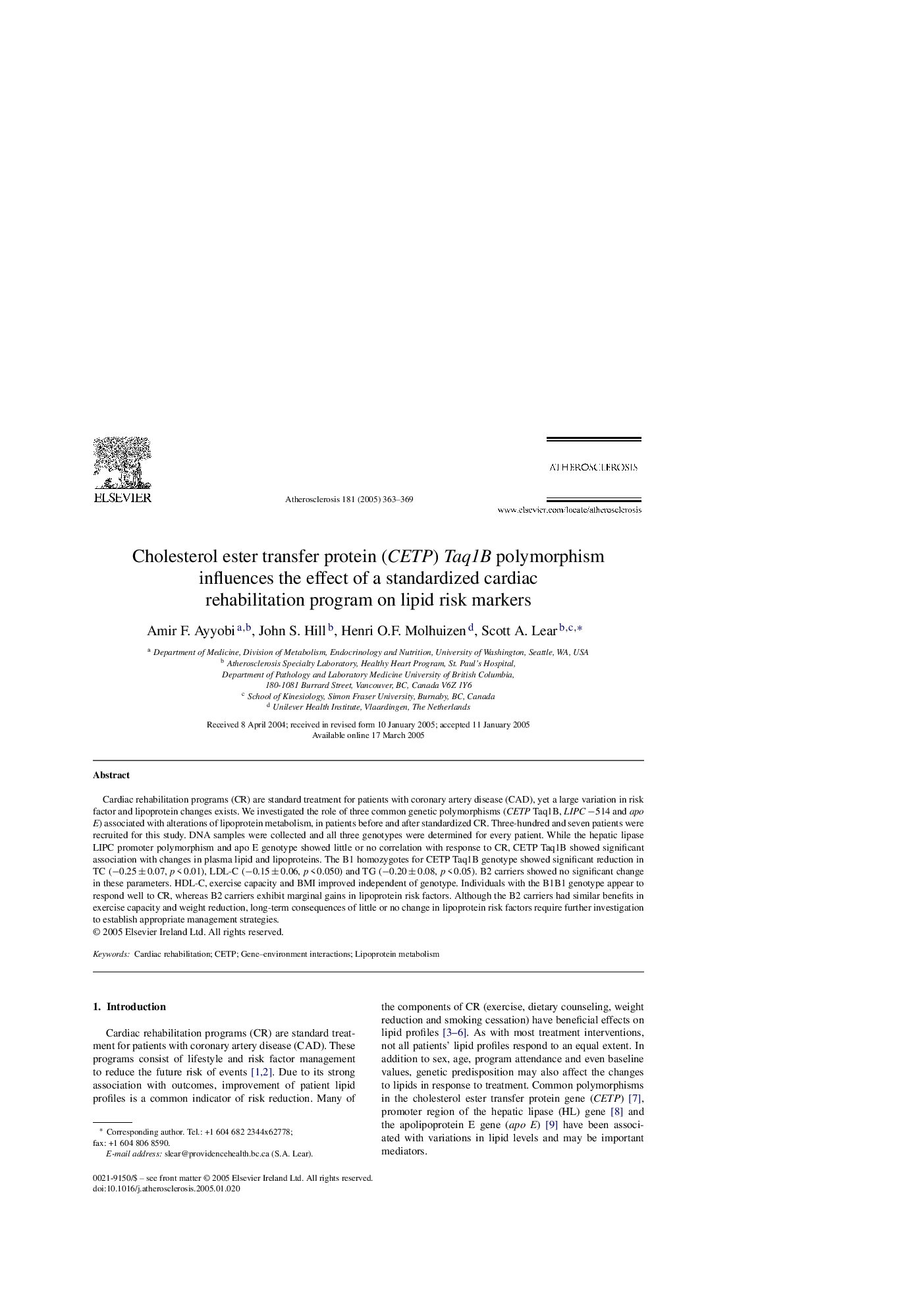| Article ID | Journal | Published Year | Pages | File Type |
|---|---|---|---|---|
| 9157604 | Atherosclerosis | 2005 | 7 Pages |
Abstract
Cardiac rehabilitation programs (CR) are standard treatment for patients with coronary artery disease (CAD), yet a large variation in risk factor and lipoprotein changes exists. We investigated the role of three common genetic polymorphisms (CETP Taq1B, LIPC â514 and apo E) associated with alterations of lipoprotein metabolism, in patients before and after standardized CR. Three-hundred and seven patients were recruited for this study. DNA samples were collected and all three genotypes were determined for every patient. While the hepatic lipase LIPC promoter polymorphism and apo E genotype showed little or no correlation with response to CR, CETP Taq1B showed significant association with changes in plasma lipid and lipoproteins. The B1 homozygotes for CETP Taq1B genotype showed significant reduction in TC (â0.25 ± 0.07, p < 0.01), LDL-C (â0.15 ± 0.06, p < 0.050) and TG (â0.20 ± 0.08, p < 0.05). B2 carriers showed no significant change in these parameters. HDL-C, exercise capacity and BMI improved independent of genotype. Individuals with the B1B1 genotype appear to respond well to CR, whereas B2 carriers exhibit marginal gains in lipoprotein risk factors. Although the B2 carriers had similar benefits in exercise capacity and weight reduction, long-term consequences of little or no change in lipoprotein risk factors require further investigation to establish appropriate management strategies.
Related Topics
Health Sciences
Medicine and Dentistry
Cardiology and Cardiovascular Medicine
Authors
Amir F. Ayyobi, John S. Hill, Henri O.F. Molhuizen, Scott A. Lear,
